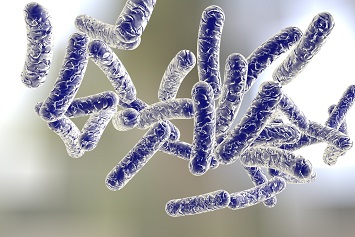Building owners and facility managers reopening vacant buildings as stay-at-home orders expire may need to flush plumbing fixtures weekly to prevent harmful organisms, such as the Legionella bacteria—which can cause Legionnaire’s Disease, a bacterial pneumonia—from growing in plumbing, according to a pre-press research study.
Employers and building owners should be aware of water contamination hazards but may not find clear guidance in an unprecedented situation where buildings stood empty for weeks or months as a result of stay-at-home orders issued in response to the COVID-19 pandemic, according to researchers.
The National Science Foundation commissioned Andrew Whelton and Caitlin Proctor at Purdue University and others to study the effects of plumbing stagnation and methods for recommissioning buildings.
The COVID-19 pandemic prompted the shutdown or low occupancy of large buildings worldwide. Building water stagnation can lead to a buildup of copper and lead in plumbing fixtures, as well as, the growth of microorganisms like the Legionella bacteria.
Coronavirus disease 2019 (COVID-19) is a respiratory illness caused by the SARS-CoV-2 virus.
Symptoms of Legionnaire’s Disease may appear similar to the symptoms of COVID-19, the American Industrial Hygiene Association (AIHA) warned in a factsheet on building re-entry.
AIHA also warned that individuals at high risk for severe illness from the SARS-CoV-2 virus are at the greatest risk of Legionnaire’s Disease. Those recovered from COVID-19 may have sustained respiratory damage that would make them susceptible to Legionella infection, according to AIHA.
“The unfortunate convergence of COVID-19 and Legionnaires’ disease is likely to be hard to distinguish and more likely to be a deadly combination for many,” AIHA warned.
The Purdue study, “Considerations for Large Building Water Quality after Extended Stagnation,” found that:
- Water in buildings shutdown due to stay-at-home orders or occupied by skeleton crews of “essential” workers will stagnate and get old;
- Harmful organisms like legionella can grow in plumbing if the water stagnates and unsafe levels of lead and copper can also be found; and
- When buildings reopen, a process called recommissioning can be performed before plumbing can returned to normal use.
The researchers conducted 10 hours of flushing water systems in a two-story building on the Purdue campus. The building housed an auditorium, cafeteria, classrooms, gym, and other rooms.
However, there is no consensus on how long a building may be unoccupied before water systems must be recommissioned, according to Whelton and his colleagues. There also are no guidelines or recommendations for the unprecedented shutdown brought on by the COVID-19 pandemic.
The Purdue researchers suggested that building owners:
- Contact their government environmental public health departments for advice about building water safety;
- Communicate information provided by the health department to building occupants;
- Consider refreshing plumbing by flushing fixtures at least weekly – new, fresh water can help prevent harmful organisms from growing in plumbing and dispose of water with unacceptable levels of lead and copper; and
- Contact a plumber or engineer for assistance.
Researchers concluded that responsibility for building water safety is shared among the building owner, drinking water provider, and local and state public health authorities.

